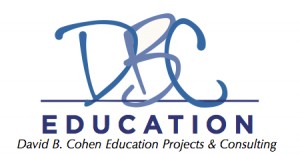On September 27, I had the opportunity to watch a candidates’ forum (not all that different from a debate) organized by the Santa Clara County Office of Education, and Educate Our State. You can watch the video if you’re interested. If you’ve been following the election and the issues, you won’t find any surprises here. The State Superintendent of Public Instruction (SSPI) race features incumbent Tom Torlakson facing Marshall Tuck, the candidate favored the education “reform” camp looking to weaken unions, expand charter schools, and continue or expand test-based accountability measures in schools.
My support for Torlakson was a foregone conclusion. There may not have been four more challenging years to hold that job in recent memory, and Torlakson has done an excellent job. While budgets and jobs were being slashed, Torlakson fought for more funding, and resisted the heavy-handed coercion of the U.S. Department of Education when they tried to force us into poor policies as conditions in Race to the Top and NCLB waiver applications. Torlakson is a key reason that California has steered clear of the worst excesses and missteps of edreform (see: NY, NM, TN, LA, FL, OH, MI, D.C.), and at the same time made progress on many fronts that serve students and teachers well – in technology infrastructure, career tech. ed., arts education, professional development for teachers and addressing the future of the teaching profession in California.
California has been fortunate to be led by educational office-holders who understand education, and more importantly, pay attention to the best research in the field before making, or changing policy. With Jerry Brown in the governor’s office, Michael Kirst as president of the State Board of Education, and Tom Torlakson as SSPI, we have a trio of leaders whose views on education are not shaped by trends, headlines, or opinion polls. Charles Kerchner has described their combined influence in making California an education outlier. When Arne Duncan or John Deasy or Bill Gates tell us we should put test scores into teacher evaluations, Torlakson relies on his experience teaching and his knowledge of research showing how unstable and imprecise such methods would be. When conflicting policies put California on course towards excessive testing simultaneously on different standards, Torlakson took a stand and helped work out a transition that made fiscal and pedagogical sense, despite the sky-is-falling alarms from people who equate testing with accountability.
Tuck’s strategy is the usual anti-incumbent approach: suggest that whatever is wrong can be attributed to the incumbent, and promise change. For most of what’s wrong in California, our deplorable school funding and child poverty problems are the greatest obstacles to improvement. Torlakson has been strong advocate on these issues. Meanwhile, Tuck is in a bind, because to the extent he acknowledges these obstacles, he also acknowledges that the problems are much deeper than the SSPI can solve – whoever it is. And if Tuck does what any sensible education advocate in the state should do – which is demand a dramatic and sustained increase in education spending – then he sounds like Torlakson and CTA. Blaming Torlakson for things beyond his control is Tuck’s main approach in taking on an incumbent, but it doesn’t really fly; on education policy, the SSPI answers to the State Board of Education, and cannot raise taxes, pass budgets, or legislate. I don’t mean to suggest it’s an office without power or influence; however, Tuck has to oversimplify matters so much that running against Torlakson’s overall record makes no sense.
The lightning rod issue of this race is the Vergara lawsuit currently headed to the appellate court. Tuck wants to suggest that the plaintiffs are all of California’s kids, rather proxies selected to give legal standing to a litigious non-profit organization created for this purpose. Torlakson also sees through the façade of the Vergara case. I won’t re-hash here what I’ve written at length elsewhere regarding the deep flaws in the Vergara case and ruling. The contrast between Tuck and Torlakson is most apparent on this topic; Tuck sees that as his strength, and it may also be the issue that drives Torlakson supporters to be more active on his behalf. If so, it’s too bad. Yes, we should work to defeat Tuck, Torlakson deserves re-elections on his own merits.
I’m supporting Torlakson based on his great track record of pulling people together to work on important initiatives, his superior grasp of the field and the issues, and his priorities for the future. Other than attacking Torlakson, Tuck can only pull up claims regarding his leadership of Green Dot charter schools and the Partnership for Los Angeles Schools (PLAS); there are always various ways to pick and argue the numbers on that record, and lots of teachers and community members who are still bitter over Tuck’s leadership at PLAS. But even taken at face value, Tuck’s record would not qualify him for the job he seeks.
There are some issues where Tuck and Torlakson may not be far apart. Both are in favor of better teaching, better technology, and the arts! But since Torlakson has been leading in those areas all along, they don’t give Tuck any opening as campaign issues. The bottom line: Tuck has nothing to offer that California needs at this time. Torlakson has kept California moving in the right direction during a period that presented fiscal challenges and policy tumult, and we will be best-served by keeping him in office another four years.

